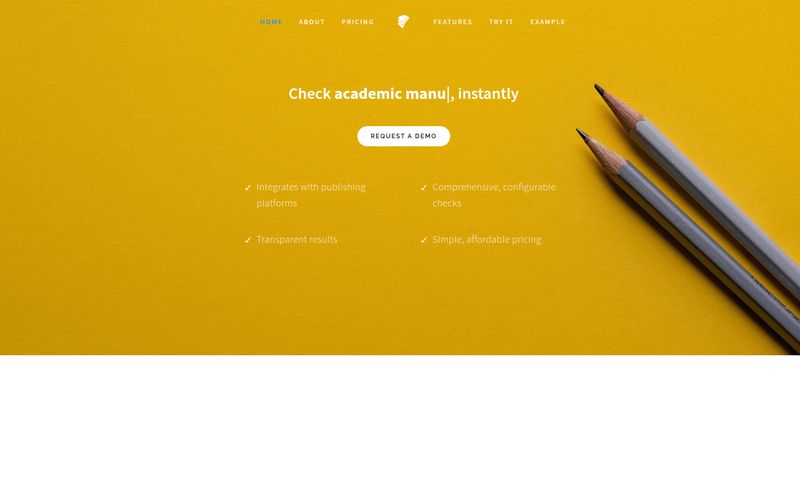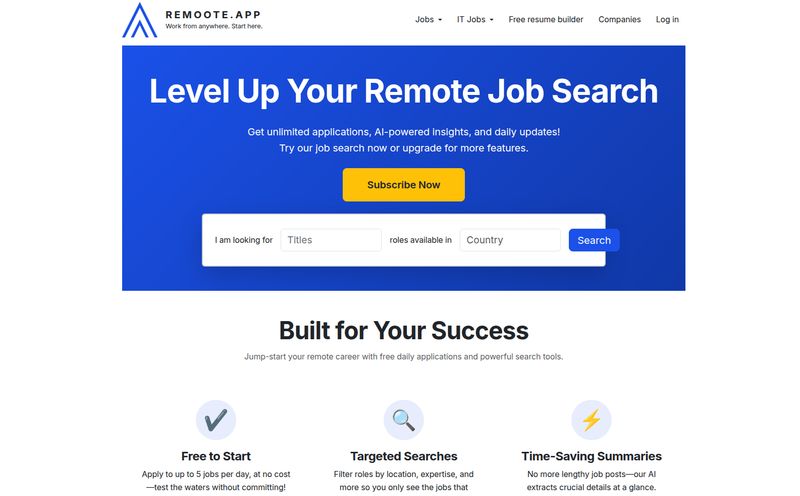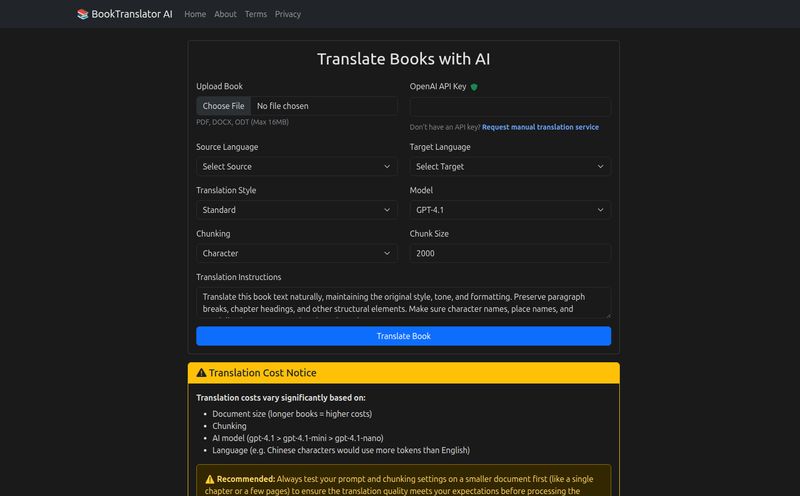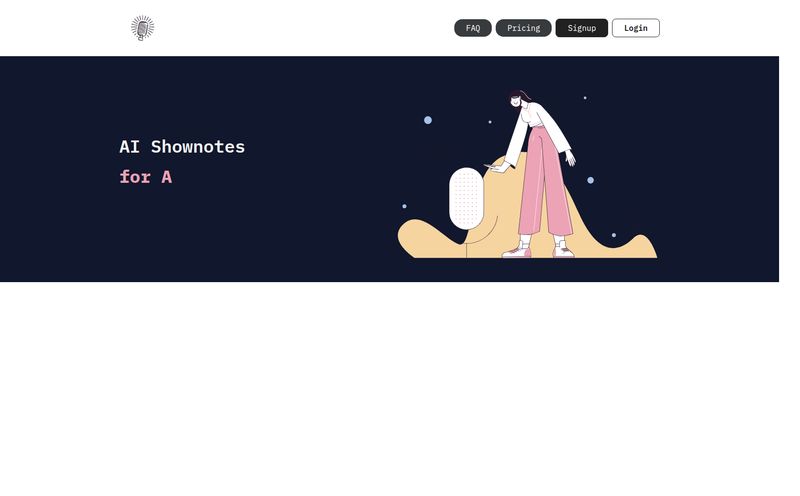We’ve all been there. It’s 3 PM on a Tuesday, your coffee is wearing off, and a 78-slide presentation deck lands in your inbox. The title is something vague like “Q3 Synergy Framework.” You open it, and it’s a wall of text, bullet points, and confusing charts. Your soul just… deflates. The thought of slogging through it, trying to pull out the actual important bits, is enough to make you want to close your laptop and take up farming.
For years, this has been the grim reality of corporate life and higher education. We call it “Death by PowerPoint.” It’s a slow, soul-crushing process of information overload. So when a tool like SlideNotes pops up on my radar, claiming it can automatically turn those dreadful presentations into clean, readable notes using AI, my inner SEO-nerd and productivity-hacker sits up straight. Skeptical, but intrigued.
Is this just another overhyped AI gadget, or could it actually be the thing that saves us from slide-induced comas? I had to find out.
What on Earth is SlideNotes Anyway?
Think of SlideNotes as a digital alchemist. You feed it a leaden, clunky presentation file—either a PowerPoint (.pptx, and yes, their site says .pttx, which gave me a little chuckle) or a .pdf—and it uses artificial intelligence to spin it into golden, easy-to-digest notes. It’s not just copying and pasting text. The goal here is to use AI to understand the structure, identify the key takeaways, and present them in a logical, readable format. A real summary, not just a text dump.
The whole premise is built on their tagline: “Work Smarter, Not Harder.” And I have to say, in a world saturated with tools that add more complexity to our lives, one that promises to remove a tedious task is immediately appealing. The idea of outsourcing the most boring part of my job—deciphering dense presentations—to a robot? Sign me up.
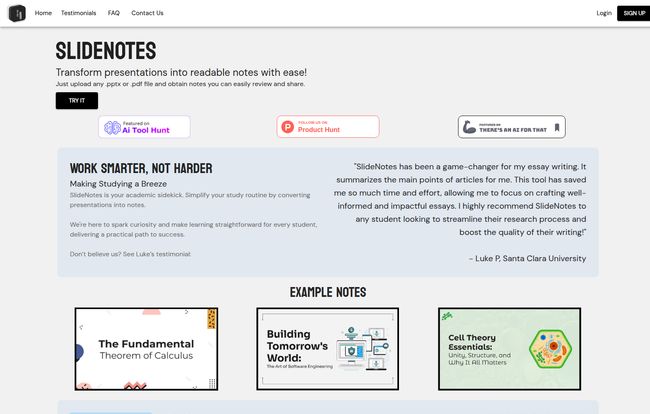
Visit SlideNotes
Who is This Tool Actually For?
As I browsed their site, I could immediately see two main camps of people who would weep with joy over a tool like this. It’s not a one-size-fits-all solution, but for these groups, it’s a potential game-changer.
The Overburdened Student
I remember my college days. Piles of textbooks, sure, but the real enemy was the endless stream of lecture slides uploaded to the university portal. Each one packed with just enough information to be crucial for the exam but so poorly organized that learning from them was a nightmare. You’d spend hours just transcribing the text into a Word doc so you could actually study it.
SlideNotes seems custom-built to solve this exact problem. The testimonials from students, like Luke P. from Santa Clara University, who says it was a “game-changer for my essay writing,” really hit home. It’s not just about passing exams; it's about freeing up cognitive bandwidth. Instead of spending three hours re-typing notes, you can spend that time actually understanding the concepts. It transforms a passive, painful task into an active learning tool.
The Time-Strapped Professional
This is where I see myself. In the agency world, you get bombarded with client decks, research reports, and internal strategy presentations. Robert D., a VP at Alytics, mentioned it converts “lengthy client presentations into clear, actionable notes” for more effective follow-ups. That’s huge. How many times have you left a meeting with a vague sense of what was decided, only to spend an hour trying to find that one slide that had the data you needed?
Product Managers, like Mathilde L. in the testimonials, are another perfect example. They have to synthesize information from a dozen different departments. A tool that can quickly distill a 50-slide technical spec into a two-page summary? That doesn’t just save time. It prevents miscommunication and keeps projects moving. It’s a simple, elegant productivity hack.
My Experience: Putting SlideNotes to the Test
Talk is cheap, so I dug up a particularly dense marketing trends report from last year—a 45-slide PDF beast filled with charts, jargon, and way too many bullet points. I uploaded it to SlideNotes, half expecting it to crash and burn.
The process was stupidly simple. Upload file, wait a bit (I used the time to make more coffee), and boom. A document of notes appeared. I was genuinely surprised. It wasn't perfect, but it was far better than a simple text scrape. The AI had done a decent job of identifying headers, grouping related points, and creating a coherent flow. It pulled out key statistics and summarized paragraphs into concise sentences. It felt like I’d handed the deck to a junior assistant and said, “Give me the cliff notes.”
This brings me to an important point. It’s AI. It's not a sentient, all-knowing being. It's a very, very smart pattern-recognition machine. So, let's get into the nitty-gritty.
The Good, The Bad, and The AI
No tool is perfect, especially in the fast-moving world of AI. Here’s my honest breakdown.
The Good Stuff (Why I'm Impressed)
The sheer speed and efficiency are the killer features. What would have taken me an hour of manual work took about two minutes. For that alone, it's a win. The interface is clean and minimalist—no learning curve required. I also love that it's been featured on platforms like Product Hunt and AI Tool Hunt. That’s good social proof and shows they’re active in the tech community.
But the biggest advantage, in my opinion, is how it liberates information. Presentations are a terrible format for storing and sharing knowledge. They’re rigid and hard to search. By converting them to text, SlideNotes makes that knowledge accessible, searchable, and usable.
The Reality Check (Where It Could Improve)
Let's be real. The AI isn't going to capture the nuance of a speaker's tone or the subtle meaning of a complex diagram. If a slide just has a picture of an iceberg with the word “synergy” underneath, the AI is probably going to be as confused as you are. It’s fantastic for text-heavy slides but might struggle with highly conceptual or visual content. So, I wouldn’t use it to generate notes for a heart surgeon’s conference and then operate on someone. A quick human review is always, always a good idea.
My other small gripe is the lack of detailed information on their site. It’s very clean, which is great, but I was left wanting to know more about the underlying tech and future roadmap. A small complaint for an otherwise great experience.
Let's Talk Money: The SlideNotes Pricing Mystery
Ah, the big question. What does this magic cost? Well, here’s the thing… I couldn’t find a price. As of this writing, there's no public pricing page. The site pushes you to “Try It.”
Now, as a veteran in this space, this usually means one of a few things:
- The tool is in a public beta and they're collecting feedback before monetizing.
- They operate on a freemium model, where you get a certain number of conversions for free.
- Pricing is custom for business clients.
Whatever the reason, the only way to find out for sure is to sign up and see for yourself. It’s a bit of a mystery, but one that might be worth solving if you’re drowning in slides.
So, is SlideNotes Worth Your Time?
After playing around with it, my verdict is a resounding… it depends. But mostly, yes.
If you're a student, it's a no-brainer. This thing could genuinely change how you study and save you dozens of hours per semester. Just do it.
If you're a professional who regularly deals with presentations from clients or other teams, this is a powerful productivity weapon. It streamlines your workflow and helps you get to the core of the information faster. The time saved could easily justify a potential subscription cost.
If you need a 100% flawless, legally binding transcript of a presentation, this probably isn't the final tool for you. Use it to get the first 95% of the work done in seconds, then do a final proofread yourself. It’s an assistant, not a replacement for critical thinking.
The Final Word
SlideNotes isn’t trying to reinvent the wheel. It's just making the wheel roll a hell of a lot smoother. It takes one of the most universally disliked tasks in modern work and education and makes it trivial. It’s a simple tool that solves a simple, but painfully common, problem.
It’s not about being lazy. It’s about being smart. By automating the grunt work, you free up your brain to do what humans do best: analyze, criticize, create, and connect ideas. And in today's world, that’s where the real value is. Give it a spin; I think you'll be pleasantly surprised.
Frequently Asked Questions
- How does SlideNotes actually work?
- It uses sophisticated AI, likely a form of Natural Language Processing (NLP), to scan the text and layout of your presentation. It then identifies headings, key points, and summaries to structure them into a logical set of notes, rather than just copying text.
- What file types can I upload?
- Currently, SlideNotes supports the two most common presentation formats: PowerPoint (.pptx) and PDF (.pdf). This covers the vast majority of slides you'll encounter in the wild.
- Is SlideNotes good for students?
- Absolutely. It’s practically a must-have for students. It can turn dense lecture slides into manageable study guides, saving you countless hours of tedious transcription and helping you focus on learning.
- What about for my business? Is it useful for professionals?
- Yes, it's incredibly useful in a business context. Use it to get quick summaries of client decks, internal reports, or webinar presentations. It's a massive productivity booster for anyone who has to digest a lot of information to do their job.
- Is SlideNotes free?
- The pricing is a bit of a mystery at the moment! There's no public pricing page, which often means it's in a free beta period or uses a freemium model. The best way to find out is to sign up and try it for yourself.
- How accurate are the AI-generated notes?
- They are surprisingly accurate for a first draft. However, AI can sometimes miss context or the meaning of images. Think of the generated notes as a 95% complete starting point that you should always give a quick scan for accuracy.
